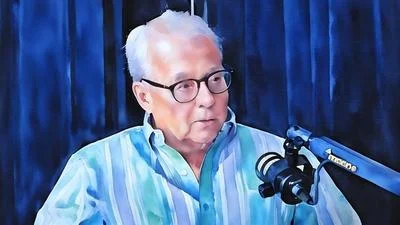Patients at The University of New Mexico Hospital who have substance use disorders are now receiving more comprehensive care thanks to the CAMINOS program. This initiative, which stands for Coordinating Addiction Medicine with Inpatient and Outpatient Services, aims to provide addiction treatment to hospitalized patients, regardless of whether their substance use disorder has been previously diagnosed.
Dr. Sergio Huerta, medical director of CAMINOS, explained, “We are an addiction medicine consult service. Anybody with an addiction in the hospital, we can see, even if it hasn’t been diagnosed yet. The whole concept is to meet people where they’re at when they’re most vulnerable and most in need.”
The program connects patients to treatment options during their hospital stay and supports their transition into ongoing care after discharge. Dr. Huerta described the process: “We go talk to the patient, offer them treatment services, including medications, and refer them to treatment. We also have a peer on our team with lived experience in recovery. Patients who are seen by peers tend to do better. They’re more adherent to their medications and treatments when they leave the hospital.”
Dr. Chris Smith, director of operations for CAMINOS and section chief of Hospital Medicine, highlighted the difference the program has made: “Almost every patient we see is not here primarily for their substance use disorder. They’re admitted for something else. Before our service, these problems weren’t always addressed. Now, the primary team can call us to see the patient, and we can start them on treatment during their stay.”
Previously, patients with addictions often left the hospital with only a referral sheet. “There wasn’t really much help for patients with substance use disorders,” said Dr. Huerta. “We treated the admitting diagnosis, like pneumonia, and then gave them a list of resources for when they left. That really wasn’t the best way to do things.”
New Mexico faces significant challenges related to substance use; it has the highest alcohol-related death rate in the United States and is among the states most affected by drug overdose deaths. According to Dr. Huerta, about one in ten residents of New Mexico lives with a substance use disorder.
In its first year of operation, CAMINOS completed over 1,200 consultations at UNM Hospital—making it one of the busiest consult services there—and initiated more than 450 patients on medications such as buprenorphine or methadone for opioid use disorder.
Dr. Smith noted that even if only half of those patients continue treatment after leaving the hospital, it represents significant progress: “Even if only half of those patients continue treatment after discharge, that’s a huge success for a population that can be very difficult to engage.”
He also observed improvements in patient outcomes: “It has a dramatic change on their whole hospital stay.” Patients starting addiction treatment are less likely to leave against medical advice and more likely to follow through with other necessary treatments.
CAMINOS is influencing hospital culture by increasing staff comfort in addressing addiction issues directly. Dr. Huerta stated: “Our goal is that the primary teams feel more comfortable identifying and treating substance use disorders. We’re beginning to change the culture.”
The program also serves as a training ground for future healthcare professionals; medical students, residents, and fellows now rotate through CAMINOS to learn about treating substance use disorders alongside experienced providers and peer support specialists.
“Substance use disorders are everywhere,” Dr. Smith said. “No matter what you end up doing as a physician, you’re going to see patients with this. Having that background makes you a better provider.”
Looking ahead, CAMINOS leaders hope to expand their reach by strengthening outpatient connections and building partnerships with other hospitals across New Mexico.
“It’s a reachable moment when patients are here,” Dr. Huerta said. “By offering treatment, we help them feel more comfortable, we help them stay and complete their care, and we give them a better chance at recovery. That’s what makes this work so meaningful.”









